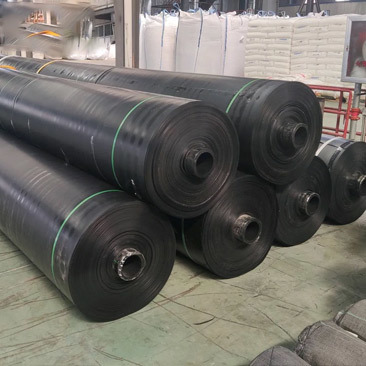Understanding Geomembranes: Essential Materials for Construction and Environmental Protection
Release time:
2025-10-01
Geomembranes are synthetic membranes widely used in construction and environmental applications, primarily due to their impermeability and durability. These materials play a crucial role in various projects, particularly in preventing water and contaminants from seeping through soil and into groundwater. Understanding geomembranes is essential for professionals in the building and construction ind
Geomembranes are synthetic membranes widely used in construction and environmental applications, primarily due to their impermeability and durability. These materials play a crucial role in various projects, particularly in preventing water and contaminants from seeping through soil and into groundwater. Understanding geomembranes is essential for professionals in the building and construction industry, as they facilitate effective project management and environmental protection.
Typically made from materials such as polyethylene, polypropylene, or polyvinyl chloride (PVC), geomembranes are designed to act as barriers. They can be manufactured in various thicknesses and specifications to meet specific project requirements, making them versatile for different applications. One of the primary uses of geomembranes is in landfill construction, where they serve to contain hazardous waste and prevent leachate from contaminating surrounding soil and water sources.
Additionally, geomembranes are commonly employed in water management systems, such as ponds, reservoirs, and irrigation systems. Their impermeable nature ensures that water is retained without allowing it to seep into the ground, thus optimizing water storage for agricultural and recreational purposes. Moreover, geomembranes are used in various engineering projects, including tunneling and trenching, where they help maintain soil stability and prevent erosion.
Another significant application of geomembranes is in the mining industry, where they are utilized in heap leaching processes to recover precious metals. The impermeable barrier provided by geomembranes is crucial in preventing the escape of chemicals used in the extraction process, ensuring both efficiency and environmental safety.
The choice of geomembrane material and thickness is largely dictated by the specific conditions of the project site, including soil type, expected stress loads, and environmental factors such as temperature and UV exposure. Proper installation and maintenance are also vital to the performance of geomembranes. Therefore, professionals must ensure that installation complies with industry standards and best practices to maximize the longevity and effectiveness of these materials.
In conclusion, geomembranes are indispensable in the construction and environmental sectors, providing solutions for waterproofing, containment, and sustainability. By understanding their properties and applications, industry professionals can enhance project outcomes and contribute positively to environmental preservation. As technology advances, the development of even more efficient geomembrane materials continues to evolve, ensuring a sustainable future for construction and environmental management.
Typically made from materials such as polyethylene, polypropylene, or polyvinyl chloride (PVC), geomembranes are designed to act as barriers. They can be manufactured in various thicknesses and specifications to meet specific project requirements, making them versatile for different applications. One of the primary uses of geomembranes is in landfill construction, where they serve to contain hazardous waste and prevent leachate from contaminating surrounding soil and water sources.
Additionally, geomembranes are commonly employed in water management systems, such as ponds, reservoirs, and irrigation systems. Their impermeable nature ensures that water is retained without allowing it to seep into the ground, thus optimizing water storage for agricultural and recreational purposes. Moreover, geomembranes are used in various engineering projects, including tunneling and trenching, where they help maintain soil stability and prevent erosion.
Another significant application of geomembranes is in the mining industry, where they are utilized in heap leaching processes to recover precious metals. The impermeable barrier provided by geomembranes is crucial in preventing the escape of chemicals used in the extraction process, ensuring both efficiency and environmental safety.
The choice of geomembrane material and thickness is largely dictated by the specific conditions of the project site, including soil type, expected stress loads, and environmental factors such as temperature and UV exposure. Proper installation and maintenance are also vital to the performance of geomembranes. Therefore, professionals must ensure that installation complies with industry standards and best practices to maximize the longevity and effectiveness of these materials.
In conclusion, geomembranes are indispensable in the construction and environmental sectors, providing solutions for waterproofing, containment, and sustainability. By understanding their properties and applications, industry professionals can enhance project outcomes and contribute positively to environmental preservation. As technology advances, the development of even more efficient geomembrane materials continues to evolve, ensuring a sustainable future for construction and environmental management.






